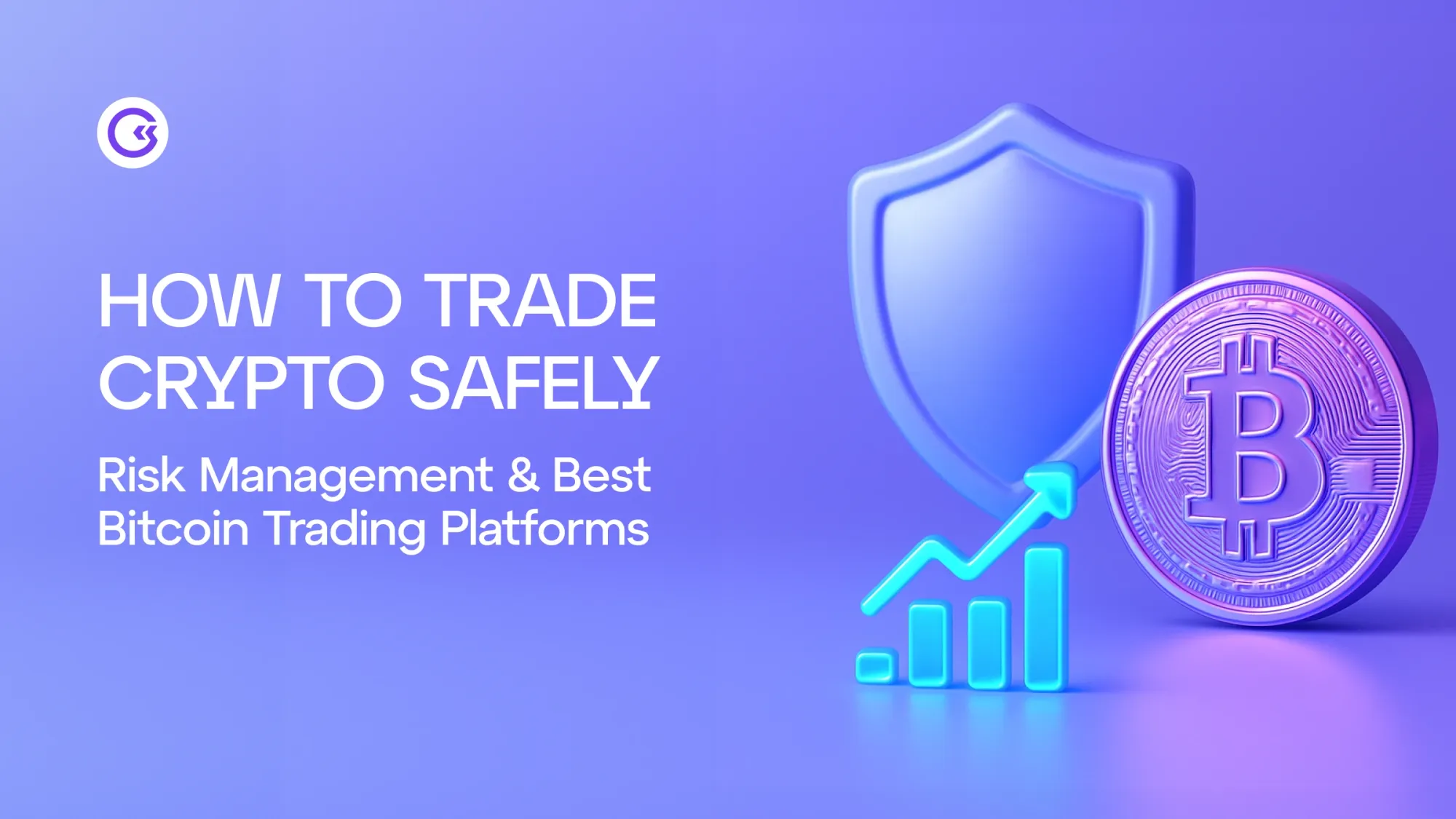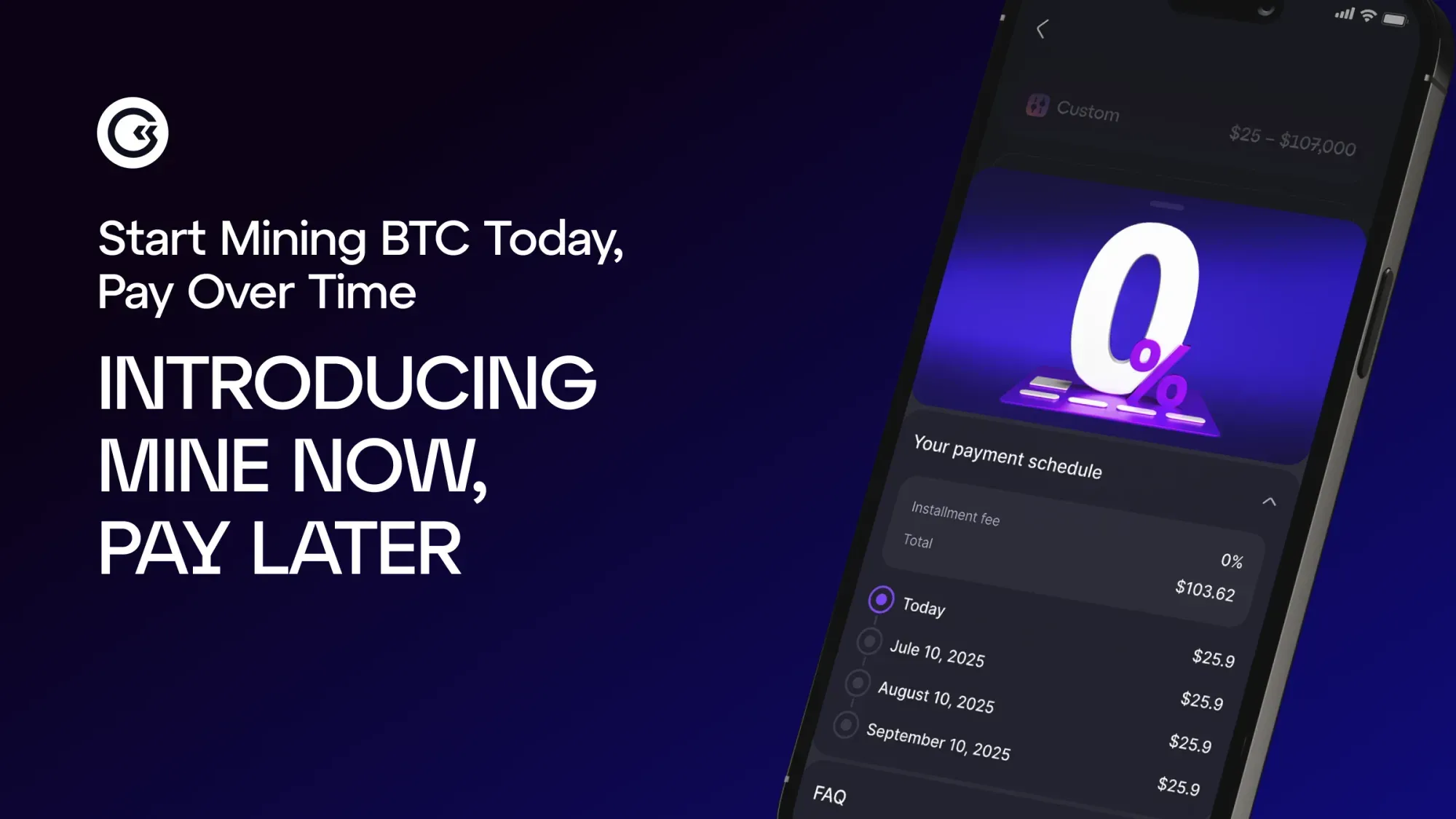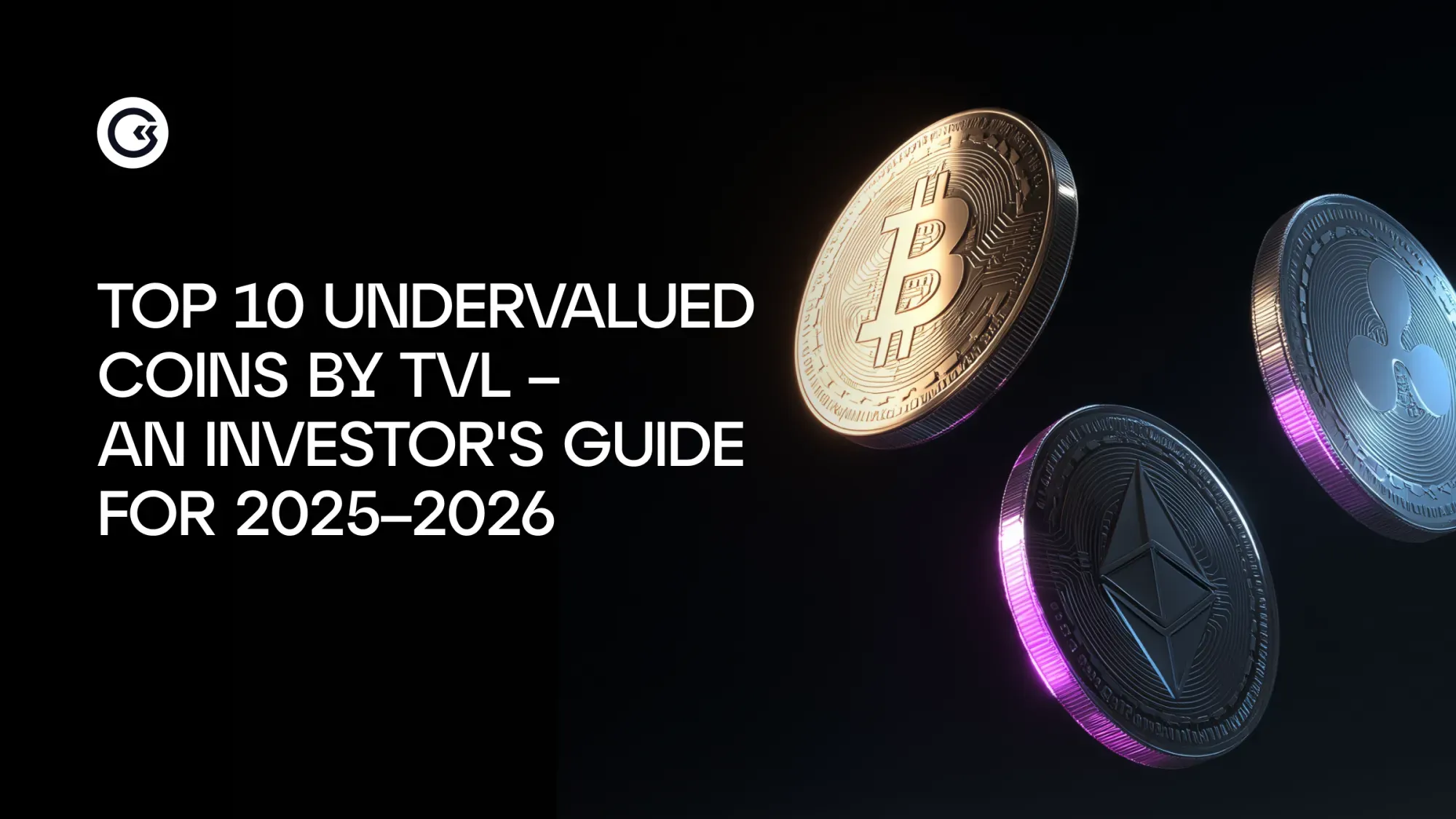Summary
Crypto can be exciting, but it’s also risky. This guide walks you through the main pitfalls — from pretty intense price swings to scams and exchange hacks — and shows you simple ways to stay safe. Just think of this as your seatbelt for the crypto rollercoaster: diversify smartly, use the right tools, and stick to a plan. We’ll also share how platforms like GoMining can help you grow your Bitcoin without the usual hassle.
Introduction
Crypto is often described as the Wild West of finance. And that’s pretty understandable. It’s fast, unpredictable, and filled with both fortune and failure stories. One person’s Bitcoin buy might turn them into a millionaire; another person’s altcoin bet might vanish overnight after a rug pull.
It’s this duality that makes crypto both thrilling and intimidating. On one hand, it offers new ways to build wealth, bypass traditional banks, and be part of innovative projects shaping the future. On the other, the dangers when involved in cryptocurrency are real: scams, hacks, wild swings in value, and even governments rewriting the rules overnight.
Therefore, it’s no wonder potential users are both mesmerized and fearful to make their first step.
In this guide, we’re not here to scare you away — we’re here to give you a level head and a strong toolkit. We’ll walk through risk in cryptocurrency, what makes it so different from stocks or real estate, and the practical strategies you can use to protect yourself.
Understanding Risks in Crypto Asset Management
The first thing most people notice about crypto is how wildly the prices move. Bitcoin can climb 15% in a single day, then crash 20% the next. If you’re new, it’s natural to ask: why is crypto so volatile?
The short answer is that the market is still young. A handful of big players (whales) control huge amounts of supply, so when they buy or sell, it sends shockwaves. On top of that, crypto prices react instantly to news headlines, government announcements, and even the odd late-night X post from someone influential. That mix of speculation, hype, and global attention means swings are part of everyday life.
But volatility is just one piece of the puzzle. There’s also outright manipulation. Ever heard of a “pump-and-dump”? It’s when a coin is hyped up in forums or on social media, attracting hopeful buyers, only for the early promoters to sell at the top. Those left behind end up holding the bag as the price sinks… And that’s if there’s a bag left to hold.
Liquidity is another hidden risk. With big coins like Bitcoin and Ethereum, you can usually buy or sell whenever you want. Smaller altcoins, though, may look valuable on paper but have barely any trading volume. Try to sell, and you might discover there’s no market for your tokens — or that selling even a small amount crashes the price.
Then there are the bigger, systemic risks. Exchanges have been hacked before, and billions have vanished. Regulators can change the rules overnight. And exchanges sometimes freeze withdrawals in a downturn, leaving people locked out of their own funds at the worst possible moment.
None of this is theory — it’s already happened. From the collapse of Mt. Gox in 2014 to the implosion of FTX in 2022, the history of crypto is dotted with cautionary tales. If you’re going to get involved in crypto, you need to understand that these aren’t rare events. They’re part of the landscape.
Common Types of Cryptocurrency Risks
Crypto doesn’t come with just one type of risk — it comes with many, and they often overlap. Here are the big ones you need to know about.
Market risk is the most obvious. Prices swing hard and fast. If you bought at the peak of a bull market and held through a bear market, you’ll know how brutal it feels to watch your portfolio drop 70% or more. That’s not unusual in crypto — it’s simply another element of the cycle.
Security risks are just as real. You’ve no doubt heard or read the stories of hackers stealing billions from exchanges, wallets, and DeFi protocols. Phishing emails try to trick people into handing over logins. Then there are the fake apps and websites that look identical to trusted ones. And here’s the painful truth: if your crypto gets stolen, there’s usually no way back. No bank, no insurance, no refunds.
Regulatory and compliance risks add another layer of uncertainty. Some governments are building frameworks to support crypto adoption. Others are cracking down, banning certain tokens or restricting trading. A coin that looks healthy today can lose its value overnight if it’s suddenly made illegal in a major market.
Operational risks are all about the platforms you use. Exchanges go down during heavy trading, withdrawals get delayed, and in extreme cases, companies collapse entirely. When that happens, customer funds are often tied up for years — or lost forever.
And then there are the psychological risks. Crypto doesn’t just test your money — it tests your mindset and your nerves. FOMO makes people buy at the top. Fear makes them sell at the bottom. More portfolios have been wrecked by bad decisions in moments of panic or hype than by price moves themselves.
Put together, these make up the landscape of crypto risks. The important thing is not to ignore them. Once you see the full picture, you can start building strategies to manage them — instead of being blindsided when they show up.
Key Strategies for Risk Management
Crypto can feel overwhelming when you first see the risks. The good news? There are clear, proven ways to protect yourself. This is what people mean by risk management in crypto — not eliminating risk entirely (you can’t), but making sure you’re in control rather than at the mercy of the market.
Diversify your holdings. You’ve heard the saying “Don’t put all your eggs in one basket”? Well, it’s the same logic here. Don’t put everything into a single coin or project. A healthy mix — Bitcoin, Ethereum, stablecoins, and maybe a few well-researched altcoins — spreads the risk. That way, if one project stumbles, it doesn’t take your whole portfolio down with it.
Use stop-loss and take-profit orders. You don’t have to be online watching every market movement. These are tools that automate your decisions. A stop-loss sells if your coin drops to a set level, limiting losses. A take-profit sells once you hit a target price, locking in gains. Both stop you from making rash, emotional decisions in the heat of the moment.
Rebalance your portfolio. Over time, one coin might grow so much it dominates your holdings. That can leave you overexposed without realising it. Rebalancing — selling a bit of the winner and topping up the laggards — helps you take profits while keeping your portfolio aligned with your goals.
Keep your exposure small. Most financial planners suggest 1–5% of your total holdings in crypto. Enough to capture upside, but not so much that a crash wrecks your retirement savings or emergency fund.
Avoid leverage unless you’re an expert. Leverage is borrowing money to make a bigger bet. It can boost profits — but it multiplies losses just as quickly. In a market where 10% swings are normal, using 10x leverage can wipe you out in minutes. For beginners, the safest move is to stay well away.
These aren’t fancy tricks. They’re simple, sensible rules that help you stay steady in a market built on uncertainty. Stick to them, and you’ll find it easier to ride out the chaos without making costly mistakes.
Tools and Best Practices
As mentioned at the beginning, managing risk isn’t just about having the right strategy — it’s also about having the right kit. The tools you use make a huge difference to how safe (or exposed) your money really is.
Start with a secure wallet. This is the foundation of crypto asset management. Hardware wallets like Ledger and Trezor store your private keys offline, making it much harder for hackers to get at them. Software wallets are fine for smaller amounts or everyday spending, but for long-term holdings, cold storage is the gold standard.
Pick exchanges you can actually trust. Go for platforms with a solid track record, clear leadership, and real transparency. Check whether they’ve been hacked before, how they handle downtime, and whether they insure customer funds. Be wary of flashy platforms that offer vague promises, sky-high rewards, or no proper authentication — those are red flags.
Use tax and portfolio trackers. Tools like CoinTracking, Koinly, and Delta don’t just help with compliance — they give you clarity. You’ll know exactly what you hold, how it’s performing, and what you’ll need to report at tax time. It might not feel as exciting as chasing the next coin, but keeping your accounts tidy saves a lot of stress later.
Look into insurance where it’s available. Some exchanges and custodians now offer cover against hacks or theft. It’s still a new area and coverage is limited, but it’s a sign the market is maturing — and it can add another safety net around your assets.
At its core, protecting your crypto comes down to control. The right tools won’t remove all the risk cryptocurrency carries, but they do put you back in charge, instead of leaving your money exposed to chance.
Long-Term vs Short-Term Risk Management
Risk management looks very different depending on your time horizon. Long-term focus is about building resilience over years, while short-term traders are more concerned with staying sharp in the moment.
For long-term holders, the priority is stability and consistency. The aim is to ride out market swings without being thrown off course by short-term noise. Traders, on the other hand, make decisions based on smaller price movements. Their strategies need to be more flexible, with a constant eye on timing.
Many long-term holders stick to HODLing — holding through the turbulence rather than reacting to every dip. Another common approach is dollar-cost averaging, where you put in the same amount at regular intervals. Over time, it smooths out your entry points and removes the stress of trying to time the market.
Day traders take a different path. They rely on speed and discipline, watching the markets closely and often using tools like stop-loss orders to protect themselves. It’s a hands-on style that requires time, focus, and a strict rulebook.
An exit strategy is essential whichever approach you take. That could mean setting a target price where you’ll take profit, or a limit on how much you’re willing to lose. Clear rules stop emotion from calling the shots, protecting both your capital and your confidence.
A Smarter Way to Earn Bitcoin with GoMining
While we’ve talked a lot about managing risk, there are also opportunities to grow your crypto holdings in safer, more structured ways. One option is GoMining, a platform that makes it simple to earn Bitcoin without having to run complex mining equipment yourself.
Instead of worrying about the cost of hardware, electricity, or maintenance, GoMining lets you buy virtual miners powered by real infrastructure. You get daily Bitcoin rewards directly to your account, with full transparency over performance. It’s a way to tap into mining profits without the usual headaches — and a good complement to a balanced crypto strategy.
Check out gomining.com to learn how you can start receiving daily Bitcoin rewards.
Conclusion
Dipping your toes in crypto is both exciting and unpredictable. The dangers of getting involved in cryptocurrency are real, but so is the chance of meaningful reward if you approach it with care. The key isn’t to chase every price swing or gamble on the latest coin — it’s to understand the landscape, accept the risks, and use smart strategies to stay in control.
This market will always have noise: headlines about the next bull run, hype around a new altcoin, panic during a downturn. The holders who last aren’t the ones who try to outguess every move — they’re the ones who stick to a plan. Discipline, education, and preparation matter more than luck.
In the end, balancing crypto risks doesn’t mean removing uncertainty. That’s impossible. What it does mean is building resilience: diversifying, using the right tools, protecting your accounts, and keeping your exposure at a level you can genuinely afford. Do that, and volatility stops being something to fear — it becomes something you can live with.
With the right mindset, you don’t just survive crypto’s ups and downs. You find a way to grow through them. And that’s what separates long-term success from short-term speculation.
FAQ
What are the biggest risks in cryptocurrency asset management?The main ones are volatility, market manipulation, hacks, sudden regulatory changes, and human behaviour. Each of these can drain value quickly if you’re not prepared — and it’s often the combination that causes the biggest losses.
How can beginners protect themselves from crypto scams?Stick to reputable exchanges, keep your coins in secure wallets, and always double-check websites and apps before entering details. If something promises “guaranteed” returns, treat it as a red flag — there’s no such thing in crypto.
Is diversification effective in crypto markets?Yes. Diversification doesn’t remove risk, but it spreads it out. If one coin or project fails, you won’t lose everything. It’s one of the simplest and most effective ways to steady your portfolio.
What percentage of my portfolio should be in crypto?For most people, 1–5% is a sensible range. It’s enough to capture potential growth, but not enough to derail your long-term financial goals if the market crashes.
How do I avoid panic selling?Have a plan before you make your first move. Decide in advance when you’ll sell, use tools like stop-loss orders, and consider dollar-cost averaging to smooth out the ride. Remind yourself of your long-term goals when the market gets noisy.
What tools can help me manage crypto asset management risks?Hardware wallets for storage, trusted exchanges for trading, portfolio trackers for clarity, tax software for reporting, and insurance products where available. Together, they create a safety net around your holdings.
October 10, 2025













